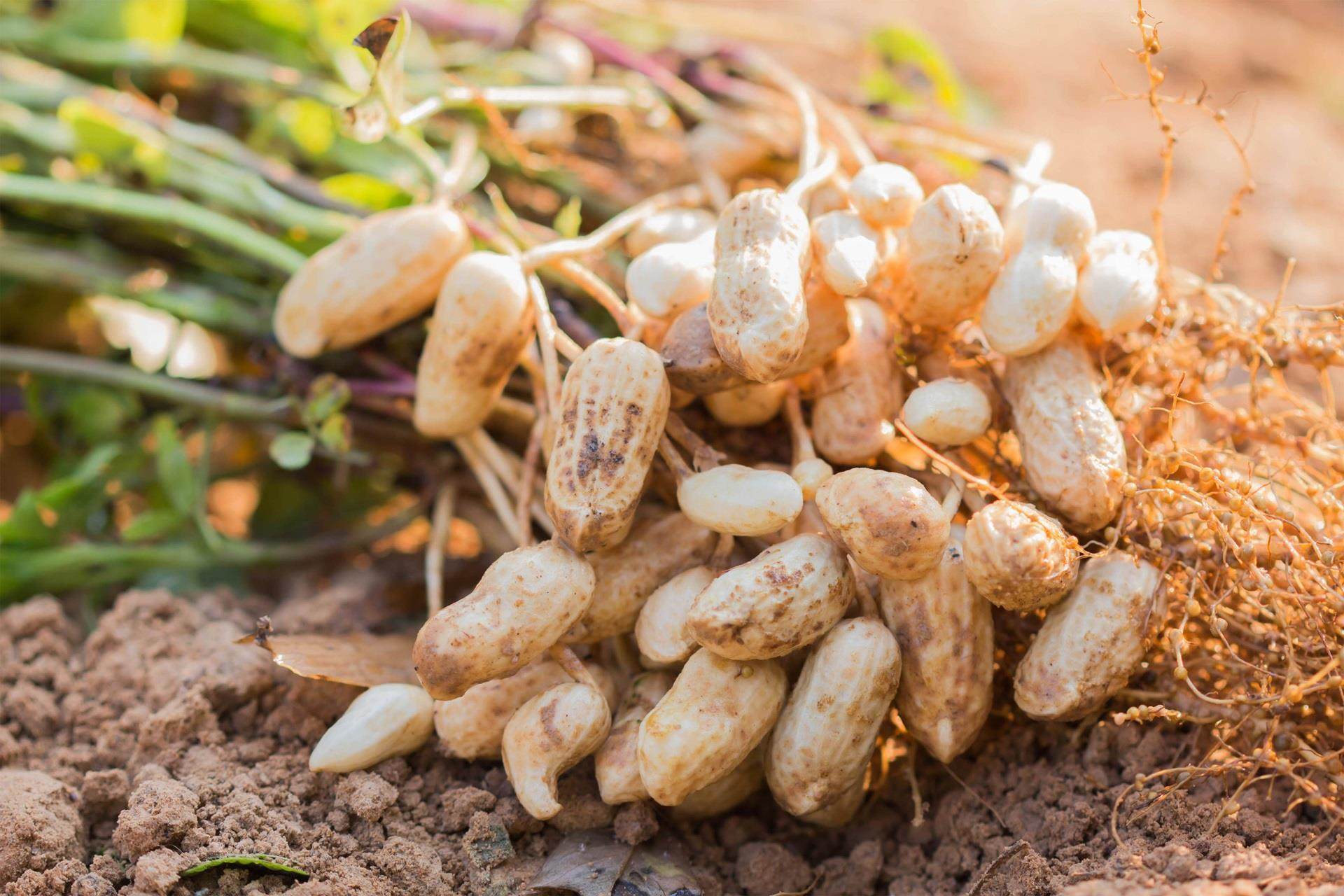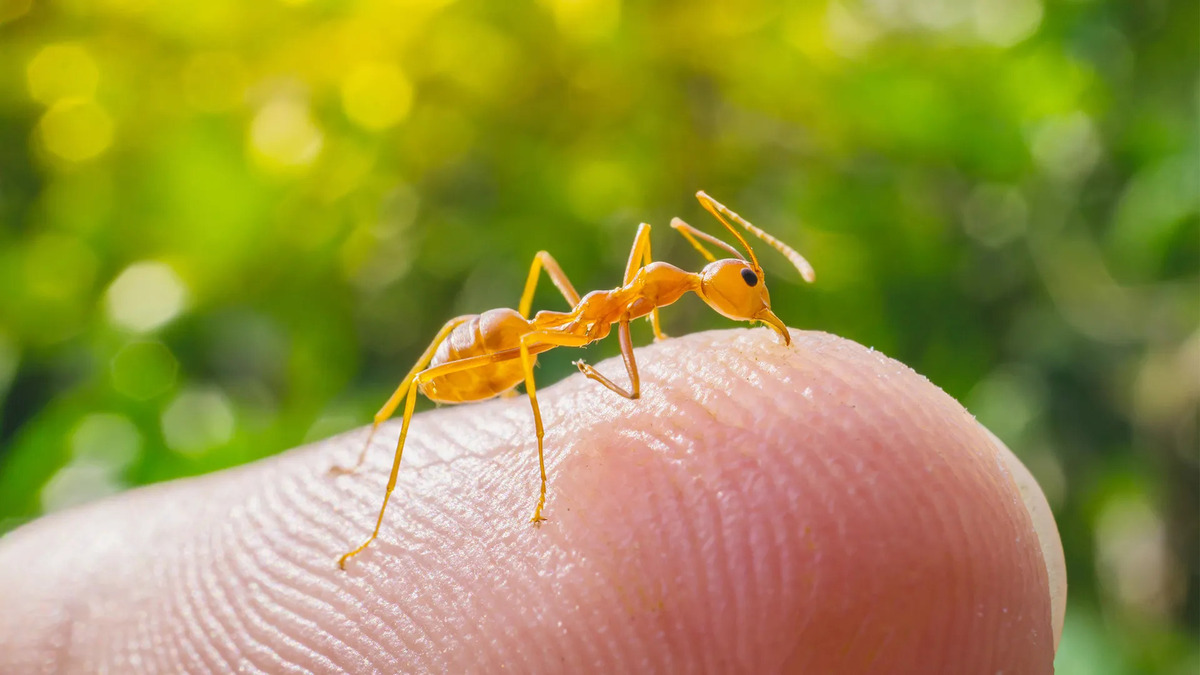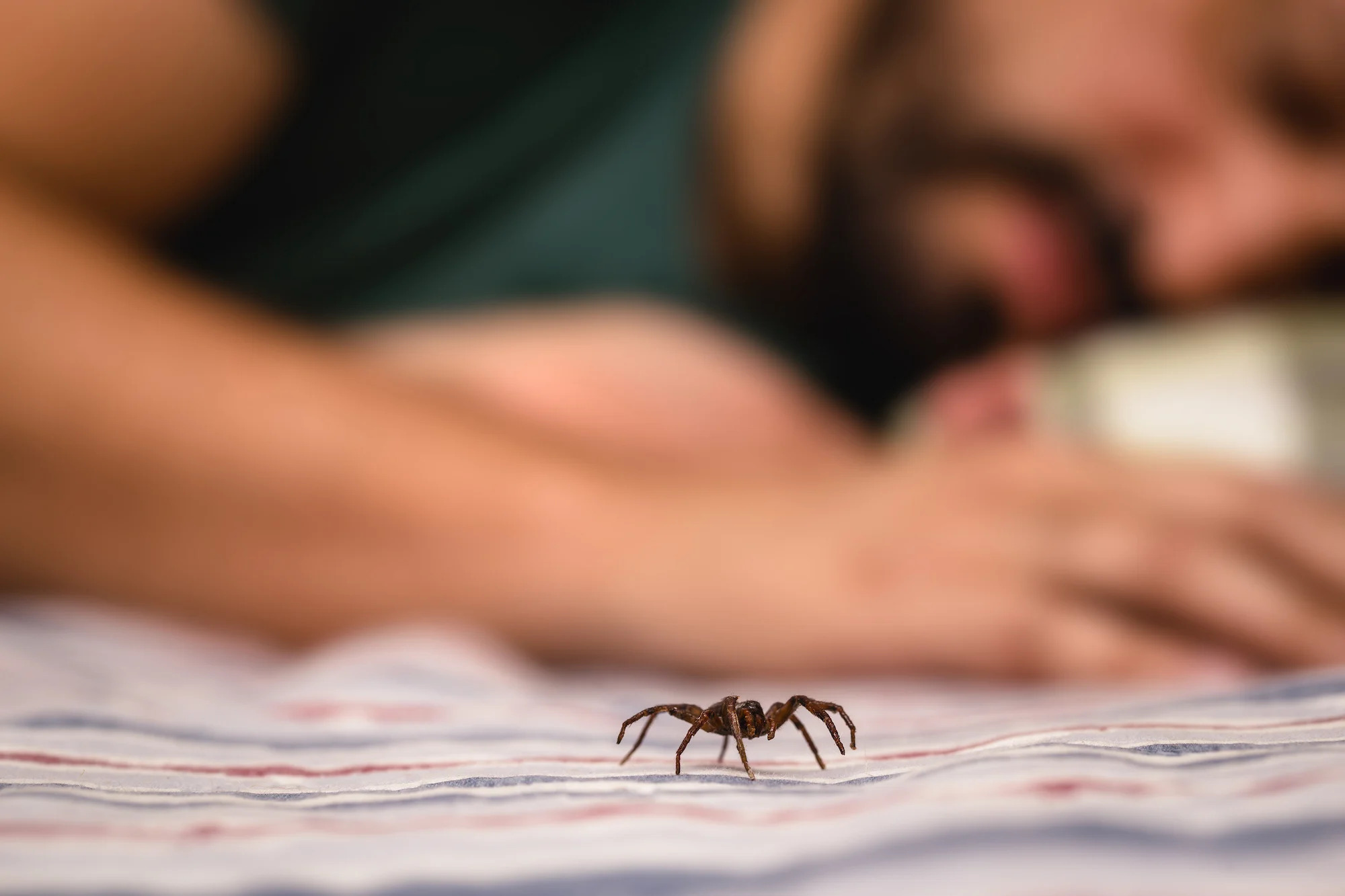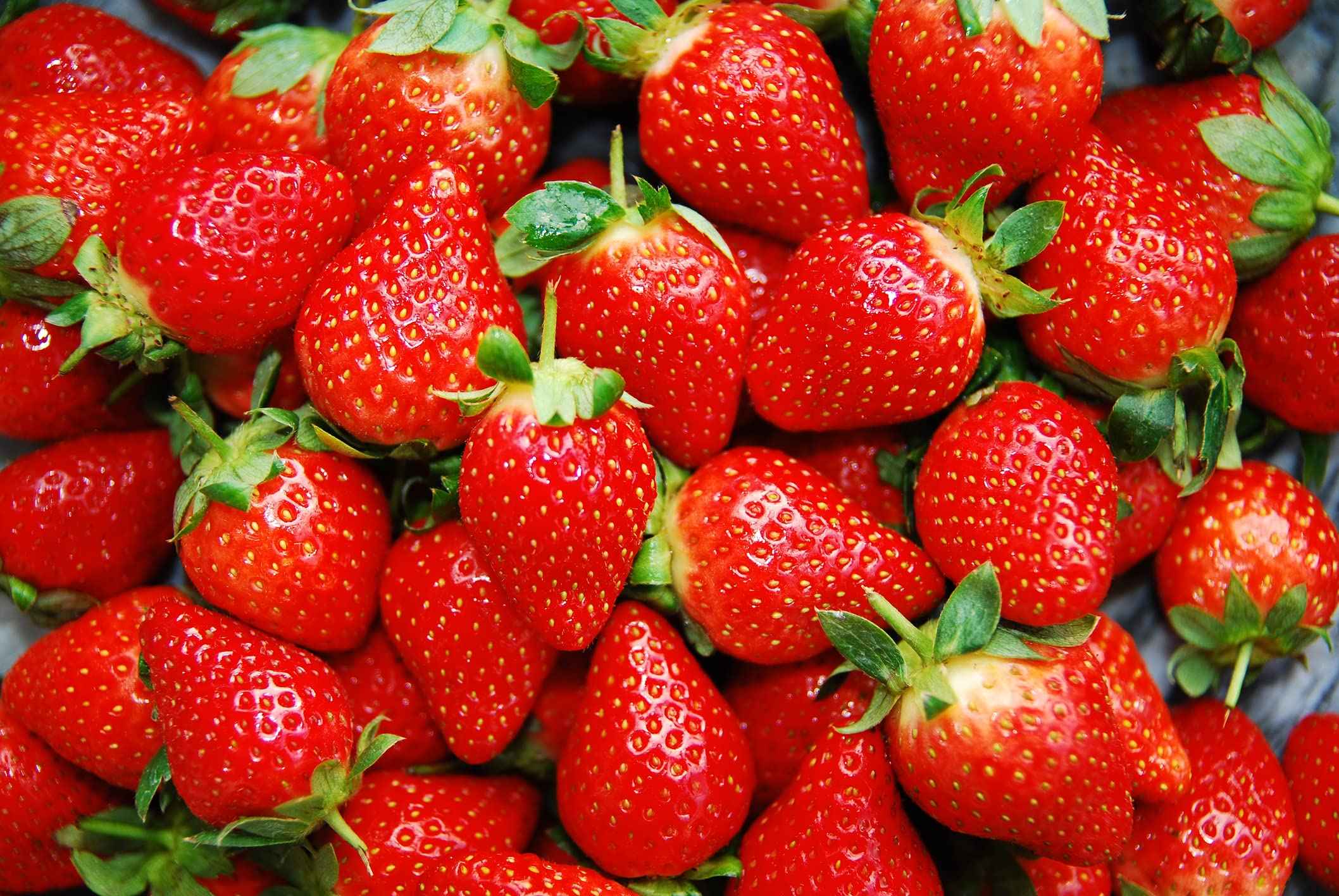Home>Gardening News and Trends>Latest News>How Many Insects Are In Peanut Butter


Latest News
How Many Insects Are In Peanut Butter
Published: November 29, 2023
Stay updated with the latest news on how many insects are found in peanut butter. Explore the surprising findings and make informed decisions about your food choices.
(Many of the links in this article redirect to a specific reviewed product. Your purchase of these products through affiliate links helps to generate commission for Chicagolandgardening.com, at no extra cost. Learn more)
Table of Contents
- Introduction
- The Presence of Insects in Food Products
- Factors Responsible for Insects in Peanut Butter
- The Process of Peanut Butter Production
- Contamination and Quality Control Measures
- Research Studies on Insect Infestation in Peanut Butter
- Common Insects Found in Peanut Butter
- Health Risks Associated with Insect Consumption
- Regulations and Standards for Insect Levels in Peanut Butter
- Tips for Consumers to Minimize Insect Consumption in Peanut Butter
- Conclusion
Introduction
When it comes to food products, ensuring their safety and quality is of utmost importance. However, despite rigorous quality control measures, instances of contamination can still occur. One common concern is the presence of insects in food items, including peanut butter. While it may come as a surprise, the reality is that insects can find their way into various food products, including those that are processed and packaged.
Insects in peanut butter can be an off-putting thought for consumers who expect their food to be free from such contaminants. But it is essential to understand that the presence of insects in food is not uncommon and can occur due to various factors, including the nature of the ingredients used and the production process itself.
Peanut butter, a popular spread enjoyed by millions worldwide, is made primarily from ground roasted peanuts. The production process involves several steps, such as blanching, roasting, grinding, and packaging. And while strict quality control measures are implemented, it is challenging to eliminate all possibilities of insect contamination.
However, it’s important to note that the presence of insects in peanut butter does not necessarily imply that the product is unsafe or of poor quality. In fact, the U.S. Food and Drug Administration (FDA) has established guidelines and allowable levels for insect fragments in food, including peanut butter, to ensure consumer safety.
In this article, we will explore the factors responsible for insects in peanut butter, the peanut butter production process, research studies on insect infestation, common insects found, associated health risks, and the regulations and standards in place to address this issue. Additionally, we will provide some useful tips for consumers to minimize insect consumption in peanut butter.
The Presence of Insects in Food Products
While the thought of insects in our food may be unpleasant, it is important to understand that it is not entirely avoidable. Insects can find their way into food products at various stages, from the raw ingredients to the final packaged product. This can happen due to multiple factors, including agricultural practices, processing methods, and storage conditions.
One of the main reasons for insects in food products is the presence of field and storage pests. These pests, typically found in agricultural settings, can infest crops during growth, harvest, and storage. Their eggs, larvae, or adults may inadvertently end up in food products such as grains, nuts, and dried fruits.
Moreover, insects are highly adaptable and can easily infiltrate processing facilities and storage areas if not adequately controlled. They can enter through gaps in doors and windows, on equipment, or even with incoming raw materials. Once inside, they can contaminate food products, leading to insect fragments or whole insects being present in the final packaged goods.
While the presence of insects may be more commonly associated with whole and minimally processed foods, even highly processed products like peanut butter are not immune. Peanut butter is made from roasted peanuts, and if these peanuts are not properly stored before processing, they can become a target for pests.
Additionally, insects can be inadvertently introduced during the manufacturing process. The equipment used for grinding and packaging, if not cleaned thoroughly, may harbor insect remnants from previous production runs. This can result in cross-contamination and the presence of insects in the final product.
It is worth noting that food manufacturers understand the importance of mitigating insect contamination risks and have established stringent quality control measures. These measures usually include pest control protocols, regular facility inspections, and proper sanitation practices. However, given the complexity of the food supply chain and the tenacity of insects, it is challenging to completely eliminate the presence of insects in food products.
To address this issue, regulatory bodies like the FDA have established guidelines and acceptable insect levels in food products. These standards are designed to ensure the safety and quality of consumer goods while acknowledging the practical challenges of completely eradicating insects.
Overall, while the presence of insects in food products like peanut butter may not be ideal, understanding the reasons behind it can help us make informed decisions and take appropriate measures to minimize the risk of insect consumption.
Factors Responsible for Insects in Peanut Butter
Several factors contribute to the presence of insects in peanut butter. Understanding these factors can shed light on why insect contamination may occur despite stringent quality control measures. Here are some key factors responsible for insects in peanut butter:
- Agricultural Practices: Insects can infest peanuts during their growth and harvest in the fields. This can happen due to inadequate pest control measures or natural infestation. Insects such as beetles, weevils, and moths are known to be attracted to peanuts and can lay eggs or deposit larvae directly on the crop.
- Storage Conditions: Peanuts are commonly stored in silos or warehouses before they are processed into peanut butter. If these storage facilities are not properly maintained or monitored, they can become breeding grounds for pests. Insects like mites and beetles can infiltrate the storage areas, infest the peanuts, and potentially contaminate the final product.
- Processing Techniques: The process of transforming peanuts into peanut butter involves various steps, including blanching, roasting, grinding, and packaging. Each of these steps presents opportunities for insects to be introduced. For example, if the peanuts are not thoroughly cleaned before processing, it can lead to insects being ground along with the nuts. Similarly, improper cleaning of equipment or insufficient sanitation practices can result in cross-contamination.
- Packaging Materials: The packaging materials used for peanut butter can also be a source of insect contamination. If the packaging materials are not stored properly or are infested with insects, they can introduce insects into the product during the filling and sealing process.
- Supply Chain Challenges: Peanut butter production involves a complex supply chain that includes multiple stakeholders such as farmers, processors, distributors, and retailers. Each step in the supply chain presents opportunities for insect contamination. For instance, during transportation, insects may be attracted to improperly sealed containers or infest the product in transit.
While food manufacturers implement quality control measures to mitigate these factors, it is virtually impossible to completely eliminate the risk of insect contamination. However, it is important to note that the presence of insects in peanut butter does not necessarily indicate a food safety issue, as regulatory bodies have established acceptable insect levels for consumer safety.
By understanding the factors responsible for insects in peanut butter, consumers can make informed choices and be aware of the measures taken by food manufacturers to ensure the quality and safety of the products they consume.
The Process of Peanut Butter Production
The production of peanut butter involves several important steps to transform raw peanuts into a smooth and creamy spread. Each stage of the process plays a crucial role in determining the flavor, texture, and quality of the final product. Here is an overview of the typical process of peanut butter production:
- Raw Peanut Selection: The process begins with the careful selection of high-quality raw peanuts. The peanuts should be free from mold, damage, or any signs of infestation by insects or pests. Proper sourcing of peanuts from reputable suppliers ensures the overall quality and safety of the final product.
- Blanching: The selected peanuts are usually blanched to remove their skins. The blanching process involves briefly immersing the peanuts in hot water and then rapidly cooling them. This helps in separating the peanuts from their skins, resulting in the production of skinless, blanched peanuts.
- Roasting: Once the skins are removed, the blanched peanuts are roasted to enhance their flavor. Roasting not only adds depth and richness to the peanuts but also helps in the removal of any lingering moisture. The roasting process can be conducted using various methods, including dry roasting or oil roasting.
- Grinding: The roasted peanuts are then ground into a paste or butter consistency. This step typically involves using specialized machinery, such as a commercial-grade grinder or mill. The grinding process breaks down the peanuts, releasing their natural oils and transforming them into a smooth and spreadable texture.
- Additives and Flavoring: Depending on the desired flavor profile, various optional additives and flavoring ingredients can be incorporated into the peanut butter. Common additives include salt, sugar, and stabilizers to enhance taste, texture, and shelf life. Some manufacturers also offer flavored variations such as honey-roasted or chocolate-flavored peanut butter.
- Packaging: After the grinding and flavoring process, the peanut butter is ready for packaging. It is typically dispensed into jars, tubes, or other suitable containers. Proper packaging materials and techniques are employed to ensure product integrity, shelf life, and protection against contamination.
Throughout the entire production process, careful attention is paid to maintaining hygiene and controlling contaminants, including insects. Food manufacturers follow strict quality control protocols, including regular equipment cleaning, facility inspections, and quality assurance tests, to minimize the risk of insect presence in the final peanut butter product.
It’s important to note that variations in the production process may exist among different manufacturers. However, the overall goal remains consistent – to provide consumers with a high-quality, safe, and delicious peanut butter experience.
Contamination and Quality Control Measures
Contamination in food products, including peanut butter, can occur due to various factors, such as improper handling, storage, or processing. It is essential for food manufacturers to implement robust quality control measures to ensure the safety and integrity of their products. Here are some key aspects of contamination and the quality control measures employed in the production of peanut butter:
Contamination Sources: Contaminants in peanut butter can originate from different sources, including raw materials, equipment, and the production environment. Insects, along with their fragments and eggs, can be introduced at any stage of the supply chain, from the fields to the processing facilities. Cross-contamination from other products or allergens is another potential source of contamination.
Pest Control Protocols: Food manufacturers implement rigorous pest control protocols to prevent and control the presence of pests in their facilities. These protocols may include regular monitoring, inspections, and the use of various preventive measures such as traps, baits, and insecticides. By actively managing pest populations, manufacturers can significantly reduce the risk of insect contamination in peanut butter.
Sanitation Practices: Proper sanitation practices are crucial in preventing contamination. Food processing equipment and facilities must be regularly cleaned and sanitized to remove any residual materials that could attract pests or harbor bacteria. Thorough cleaning of equipment used for grinding and packaging helps prevent cross-contamination and reduces the likelihood of insect fragments being present in the final product.
Supplier Audits and Controls: Food manufacturers often conduct regular audits and maintain strong relationships with their raw material suppliers. These audits verify the quality and safety protocols of the suppliers, including pest control measures and proper storage conditions for peanuts. By working closely with reputable suppliers, manufacturers can ensure the consistent quality and integrity of their raw materials.
Product Testing: Quality control measures include regular product testing to detect the presence of contaminants, including insects. This can involve microscopic analysis to identify any insect fragments or the application of specialized testing methods to validate the product’s safety and quality. If a batch of peanut butter fails to meet the quality standards, it is not released for sale.
Traceability: Establishing robust traceability systems is crucial for identifying the source of contamination in case of a product recall or consumer complaint. By keeping detailed records of raw materials, production processes, and quality testing, manufacturers can quickly trace back and resolve any potential issues related to insect contamination.
Regulatory Compliance: Food manufacturers must comply with relevant food safety regulations and standards set by regulatory bodies such as the FDA. These regulations include allowable limits for insect fragments in food products, ensuring consumer safety. Manufacturers are obliged to follow these regulations and maintain the highest standards to produce safe and high-quality peanut butter.
Overall, through a combination of pest control measures, sanitation practices, testing protocols, and supplier oversight, food manufacturers ensure the safety and quality of peanut butter. By implementing these quality control measures, they aim to minimize the risk of insect contamination and provide consumers with a safe and enjoyable product.
Research Studies on Insect Infestation in Peanut Butter
Research studies have been conducted to assess the extent of insect infestation in peanut butter and examine the potential health risks associated with it. These studies provide valuable insights into the prevalence of insects in peanut butter and help inform quality control measures. Here are some key findings from research studies on insect infestation in peanut butter:
Frequency of Insect Presence: Studies have consistently found that insects, insect fragments, or their eggs can be detected in commercial peanut butter. The presence of insects can vary depending on the production process, storage conditions, and the source of peanuts. However, it is important to note that the majority of insect contamination found in peanut butter is in the form of fragments rather than whole insects.
Types of Insects: Various types of insects have been identified in peanut butter, including beetles, mites, and weevils. These insects can inadvertently enter the peanut butter during the processing stages or be introduced through contaminated raw materials or packaging materials. The prevalence and types of insects can vary across different brands and production facilities.
Health Risks: The presence of insect fragments in peanut butter raises concerns about potential health risks. While consuming insect fragments is generally considered safe, some individuals may have allergic reactions or sensitivities to specific insect proteins. The severity of the health risks depends on the individual’s sensitivity and the amount of insect fragments ingested. However, it’s worth noting that the levels of insects found in commercial peanut butter are typically within the allowable limits set by regulatory authorities.
Regulatory Standards: Regulatory bodies, such as the FDA, have established guidelines and allowable levels for insect fragments in food products, including peanut butter. These standards are set to ensure consumer safety and take into account the practical challenges of completely eliminating insects from food products. Manufacturers are required to comply with these standards and conduct regular quality control checks to ensure their products meet the established regulations.
Impact of Processing Techniques: The processing techniques used in peanut butter production can significantly influence the prevalence of insect contamination. Research studies have found that certain processing methods, such as blanching and roasting, can reduce the presence of insects and insect fragments in the final product. Thorough cleaning and regular maintenance of processing equipment also play a crucial role in minimizing insect contamination.
Research studies on insect infestation in peanut butter provide important insights that assist food manufacturers in developing effective quality control measures. These studies underscore the need for continued research and vigilance in ensuring the safety and quality of peanut butter products. By staying informed and following recommended guidelines, consumers can make informed choices and enjoy peanut butter with confidence.
Common Insects Found in Peanut Butter
Despite rigorous quality control measures, the processing of peanuts into peanut butter can sometimes result in the presence of insects. Various types of insects can potentially find their way into peanut butter, either directly during production or through contamination of raw materials or packaging. Here are some of the common insects that have been found in peanut butter:
Beetles: Beetles are a common type of insect found in peanut butter. They can enter the production facility through incoming raw materials or migrate from nearby storage areas. Beetle larvae, such as the red flour beetle or the cigarette beetle, can also infest stored peanuts and contaminate the final product.
Weevils: Weevils, such as the granary weevil or the rice weevil, are known to be attracted to stored grains and legumes, including peanuts. These small, brown insects can infest the peanuts during storage or transportation. Weevils are particularly resilient and can survive harsh conditions, making them a persistent challenge in food processing environments.
Mites: Mites are microscopic arthropods that can infest stored products, including peanuts. While not visible to the naked eye, their presence can be detected through laboratory analysis. Mites can contaminate peanut butter with their excrement and cast skins, leading to concerns about overall product quality and potential allergic reactions.
Ants: Ants may not be as frequently found in peanut butter, but they can be a nuisance and potential contaminant. During production, ants can enter the facility through openings or hitchhike on incoming raw materials. They can contaminate the peanut butter with their bodies or excrement, compromising product quality and safety.
Flies: While less common, flies can also pose a potential risk for insect contamination in peanut butter. Flies are attracted to organic matter, including peanuts, and can access processing facilities through open doors or windows. Their presence can contaminate peanut butter with bacteria or other pathogens they carry on their bodies.
It’s important to note that while these insects can be found in peanut butter, the levels of contamination are typically within the allowable limits set by regulatory authorities. Food manufacturers implement quality control measures to minimize insect presence, including proper storage, regular facility inspections, and adherence to regulatory guidelines.
Consumers can play their part by checking the packaging for any signs of insect infestation, such as damaged or torn seals. If any concerns arise, it is advisable to contact the manufacturer or retailer to address the issue.
While the presence of insects in peanut butter may not be ideal, it is important to remember that gaining a comprehensive understanding of the challenges in food production can help consumers make informed choices. By being aware of the potential for insect presence and the measures taken by manufacturers, consumers can continue to enjoy peanut butter with confidence.
Health Risks Associated with Insect Consumption
The presence of insects in food products like peanut butter raises concerns about potential health risks for consumers. While consuming insects is generally considered safe, certain individuals may have specific health conditions or allergies that can pose risks. Here are some key factors related to the health risks associated with insect consumption:
Allergic Reactions: Some individuals may be allergic to specific insect proteins, and consuming even small amounts can trigger an allergic reaction. Common symptoms of an allergic reaction to insects can include hives, itching, swelling, difficulty breathing, or gastrointestinal discomfort. People with known allergies or sensitivities to insects should exercise caution when consuming peanut butter or other food products.
Individual Sensitivities: Even if an individual is not allergic to insects, some may experience adverse reactions or digestive discomfort when consuming insect fragments. This can vary from mild discomfort, such as stomachaches or nausea, to more severe reactions. Every individual’s sensitivity to insect consumption may differ, and it is essential to pay attention to any adverse effects and seek medical advice if necessary.
Bacterial Contamination: Insects can carry bacteria on their bodies, and if present in peanut butter, this can pose a potential risk to consumers. Bacteria like Salmonella or E. coli can cause foodborne illnesses, leading to symptoms such as diarrhea, vomiting, abdominal pain, and fever. However, it’s important to note that the occurrence and transmission of such bacteria through insects in peanut butter are relatively rare, thanks to packaging and processing protocols in place.
Regulatory Safety Standards: Regulatory bodies, such as the FDA, have established safety standards for the allowable levels of insect fragments in food products. These standards are based on extensive research and risk assessments to ensure consumer safety. Manufacturers are required to comply with these standards and conduct regular quality control checks to maintain the integrity and safety of peanut butter.
Quality Control Measures: Food manufacturers implement stringent quality control measures to minimize the presence of insects in peanut butter. These measures include pest control protocols, regular facility inspections, and proper sanitation practices. Additionally, manufacturers conduct tests to detect and control insect contamination, ensuring the safety and quality of their products.
It is important to note that the health risks associated with insect consumption in peanut butter are generally minimal when consumed within the allowable limits set by regulatory standards. Manufacturers work diligently to ensure the safety and quality of their peanut butter products, reducing the risk of insect presence and taking necessary precautions to prevent bacterial contamination.
Individuals with known allergies or sensitivities to insects should be cautious and consult with healthcare professionals if they have concerns about consuming peanut butter. By understanding the potential health risks and being vigilant, consumers can make informed decisions and enjoy peanut butter with confidence.
Regulations and Standards for Insect Levels in Peanut Butter
To ensure consumer safety, regulatory bodies have established regulations and standards for the allowable levels of insect fragments in food products, including peanut butter. These standards help to maintain product quality and minimize health risks associated with insect consumption. Here are some key aspects of the regulations and standards for insect levels in peanut butter:
Government Agencies: Regulatory agencies, such as the U.S. Food and Drug Administration (FDA), play a crucial role in establishing and enforcing standards for food safety. These agencies set guidelines and regulations to ensure that food manufacturers comply with safety requirements and produce food products that are safe for consumption.
Acceptable Insect Levels: Regulatory standards specify the allowable levels of insect fragments in peanut butter and other food products. These standards are based on extensive research and risk assessments to determine acceptable levels that are considered safe for consumption by the general population. These levels are measured in terms of weight or particle count per specified amount of the product.
Sampling Methods: Regulatory authorities provide guidelines for sampling and testing peanut butter to monitor levels of insect fragments. These methods include specific procedures for collecting samples from production batches and analyzing them in accredited laboratories. The testing methods may involve visual inspection, microscopic analysis, or other specialized techniques for detecting the presence of insect fragments.
Industry Compliance: Food manufacturers are responsible for adhering to these regulations and standards to ensure product safety. They are required to implement quality control measures to minimize insect contamination in peanut butter products. This includes conducting regular inspections, maintaining proper sanitation practices, and adhering to strict pest control protocols.
Traceability and Record-Keeping: To comply with regulations, manufacturers must maintain extensive records related to production processes, quality control measures, testing results, and supplier certifications. This allows for effective traceability and identification of potential issues, enabling timely corrective actions to be taken if necessary.
Consumer Confidence: The existence of regulations and standards for insect levels in peanut butter helps to instill confidence in consumers. Knowing that governmental agencies enforce these regulations and that food manufacturers actively comply with them reassures consumers about the safety and quality of the peanut butter products they consume.
By implementing and adhering to these regulations and standards, food manufacturers contribute to maintaining the safety and integrity of peanut butter products. Consumers can have confidence in the quality control measures taken by manufacturers to minimize insect contamination and ensure the safety of the peanut butter on store shelves.
Tips for Consumers to Minimize Insect Consumption in Peanut Butter
While regulatory bodies and food manufacturers work diligently to ensure the safety and quality of peanut butter, consumers can also take steps to minimize the risk of insect consumption. Here are some helpful tips for consumers:
1. Examine Packaging: Before purchasing peanut butter, carefully inspect the packaging for any signs of damage or tampering. Avoid buying products with torn seals or compromised packaging, as this could indicate a higher risk of contamination, including insects.
2. Proper Storage: Once the peanut butter is opened, store it in a cool, dry place, away from direct sunlight. Proper storage conditions can help discourage insect activity and maintain the freshness and quality of the product. Follow the manufacturer’s recommendations for storage to ensure the best results.
3. Check for Infestation: Periodically check the peanut butter for any signs of infestation. Look for unusual discoloration, off-putting odor, or the presence of visible insects. If any signs of infestation are detected, it is advisable to dispose of the product and contact the manufacturer for further assistance.
4. Use Clean Utensils: When scooping peanut butter from the jar, use clean utensils to avoid cross-contamination. Repeatedly using the same utensil without proper cleaning can introduce bacteria or other contaminants, including insects, into the peanut butter.
5. Follow Best Before Dates: Pay attention to the “best before” or expiration dates on the peanut butter packaging. Using the product beyond its recommended date may increase the risk of insect presence or compromise product quality.
6. Contact the Manufacturer: If you have any concerns about the quality or safety of the peanut butter, contact the manufacturer. They can provide additional information, address your concerns, and guide you on the appropriate course of action.
7. Proper Hygiene Practices: Practicing good hygiene is crucial when handling food products, including peanut butter. Wash your hands thoroughly before and after handling peanut butter to minimize the risk of introducing contaminants. This is especially important if you are preparing food for others or have known allergies or sensitivities that may increase the risk of an adverse reaction.
8. Stay Informed: Stay updated on any recalls or safety alerts related to peanut butter products. Regulatory agencies or the manufacturer may issue recalls if there is a concern about potential insect contamination or other safety issues. Keeping informed allows you to take appropriate action and make informed decisions about the products you purchase and consume.
By following these tips, consumers can minimize the risk of insect consumption in peanut butter and enhance their overall food safety practices. It is important to remember that while the presence of insects in peanut butter is typically within acceptable limits, being proactive and informed can help ensure a safe and enjoyable peanut butter experience.
Conclusion
Peanut butter, a beloved and widely consumed spread, can occasionally contain insects due to various factors such as agricultural practices, processing techniques, and storage conditions. While the presence of insects may be unappetizing to some, it is important to recognize that it is a challenge to completely eliminate them from food products. However, regulatory bodies, such as the FDA, have implemented guidelines and standards to ensure that the levels of insects in peanut butter are within acceptable limits.
Food manufacturers play a crucial role in minimizing insect contamination by implementing stringent quality control measures and adhering to regulatory standards. These measures include proper storage, pest control protocols, regular facility inspections, and comprehensive sanitation practices. Through these efforts, manufacturers strive to produce safe and high-quality peanut butter for consumers.
Consumers, in turn, can take steps to minimize the risk of insect consumption in peanut butter. This includes examining the packaging for any signs of damage, storing the product correctly, checking for infestation, using clean utensils, and following expiration dates. By practicing good hygiene and staying informed about any recalls or safety alerts, consumers can make informed decisions and maintain food safety practices in their daily lives.
While the presence of insects in peanut butter may raise concerns, it is important to remember that regulatory standards and industry practices work to ensure the safety and quality of the products we consume. By understanding the factors contributing to insect contamination and the measures taken by food manufacturers, consumers can enjoy peanut butter with confidence, appreciating its nutritional benefits and delicious taste.









